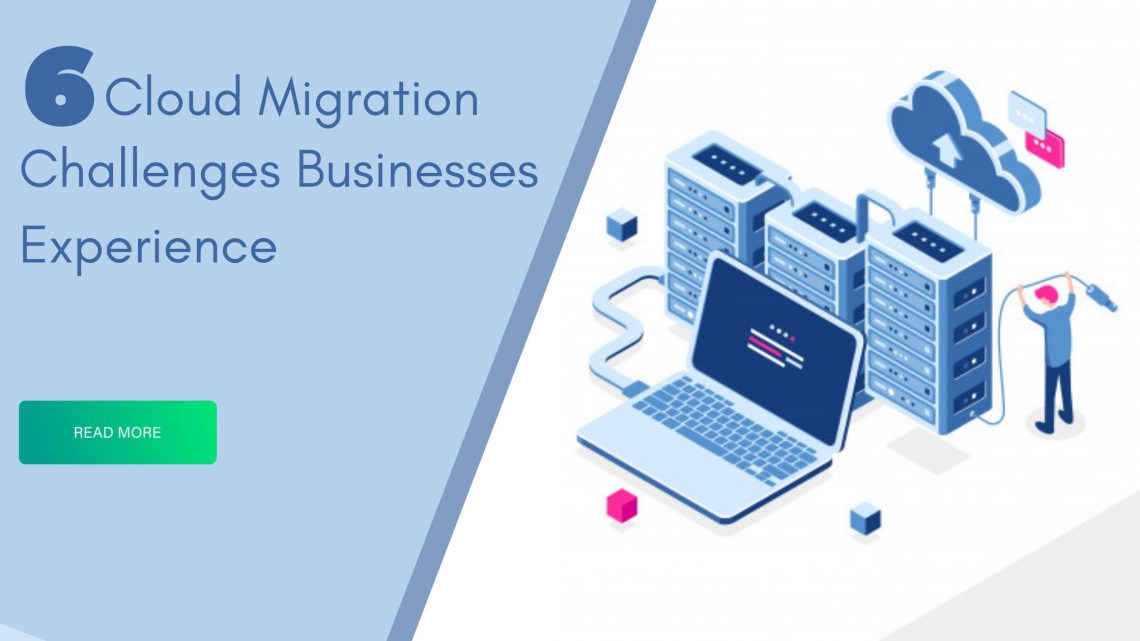
6 Cloud Migration Challenges Businesses Experience
The cloud is not just an intelligent way for IT costs to be minimized. It’s about advancing businesses today, accomplishing an excessive competitive advantage, interacting directly with customers in real-time, and various other possibilities for changing the game.
If you’re heading out with a fresh slate as a startup or are already a successful outsourcer, you ‘re likely to have several issues to address as you think on how cloud computing fits into your future. Cloud adoption challenges come in different forms, scales, and severities, as per the culture of an enterprise. If show-stoppers are not considered then it does not mean that they are any less genuine.
There is no comprehensive list of challenges to cloud computing; if there were, it would involve modifying as soon as it was brought on paper. However, there are commonly occurring topics in conversations with customers, visiting numerous trade shows, and serving the clients on their cloud roadmaps.
These following are the usual challenges businesses encounter the most.
Safety and Privacy
Cloud computing’s key concern is the security and privacy issues of businesses planning to adopt it. It heads to significant concerns that sensitive information will reside outside the corporate firewall. Even if a single site is hacked, multiple clients are affected by hacking and other cyber-attacks on cloud infrastructure.
Businesses could use security mechanisms, data loss applications, encrypted file systems, and invest in security hardware to evaluate peculiar behavior over servers to mitigate security risks.
The costs involved are difficult to evaluate because of the on-demand nature of the services. This would be complicated to budget and evaluate costs unless the service provider has any equivalent metrics to offer. If the provider’s service-level agreements (SLAs) are not up to point to assure availability and scalability, then businesses will be opposed to migrating to the cloud without a dedicated guarantee of the quality of service.
Reliability and Accessibility
Cloud service providers are unable to the round-the-clock facility; this leads to immediate outages. It is critical that the service given is monitored using third-party tools. Supervising the usage, SLAs, efficiency, performance, and business reliance on these services requires knowledge.
Productivity
When an organization moves to the cloud it begins to rely on the service providers. This relationship also helps businesses to exploit technology that they would otherwise not be able to reach. In addition, the performance of the company’s BI and other cloud-based applications is also related to the cloud provider’s efficiency as it rises and falls. Merely, you’re likely to lay down when your service provider is down.
This can not be disregarded, most cloud service providers have experienced outages in the last couple of years. You should assure that your provider has the right mechanisms in place to notify you if any problem occurs.
Data-driven businesses rely on the data in real-time. Companies may encounter problems of real-time monitoring with an inherent lack of control that arrives with cloud computing. Businesses should inquire SaaS providers if they have control policies in order to minimize these challenges.
Segregate Usage and Acceptance
During the migration to the cloud, most businesses did not have an efficient cloud adoption strategy in place, and several elements fuel ad-hoc strategies. One of those was the pace of cloud adoption. One was data center infrastructure expiry, which results in incomplete cloud migration.
Eventually, there were also specific teams for the development of particular applications or programs using the public cloud. Such business environments have difficulties with complete integration and maturation including:
*Unique projects in the cloud which lack shared standards
*Configurations on security
*Lack of shared resources and learnings across cross-team
Fortunately, organized & centralized IT, good governance and control regulations, and some strong lifting can help achieve inline cloud computing strategies, usage, & adoption.
Data Accessibility
Cloud-based applications do not always provide sufficient support structures for customer service. CIOs are raising concerns regarding data ownership and lack of data control while switching to the cloud, but this should not be an issue.
The choice of where and how to store the data is an essential factor in the decision-making process. For many organizations, even integration is a challenge. It is also a challenge for companies to ensure that all of the applications are able to work smoothly with each other.
You require to ask some questions to your cloud provider:
*Will I have my server and data?
*How long does it take to back up my data into the cloud?
*Where is my data stored?
*How do you guarantee my data is secure?
*What triggers during data corruption event?
*How do I get my data when I need to shift elsewhere?
Cloud Migration
Numerous barriers to cloud adoption are not recognized as cloud technology is still budding. CIOs are challenged to agree on the best approach to cloud transition and to find a cloud solution that can fulfill business priorities while increasing efficiencies.
While it is a dynamic and strategic process to move to the cloud, there is more than one path to success. CIOs requires to affirm that their business model fits in with the suggested solution.
There are several ways businesses can migrate to the cloud. Either through private, public, or hybrid platforms, a vital step is to find the appropriate service model for your organization.
Questions which should be asked by your cloud provider to you;
*What are your goals for the business?
*When do you get the highest data influx?
*How much will be the growth of your data?
*Want to have control of the area where your data is stored?
*What are your expectations for the SLA’s?
Unless dealt with appropriately, data migration may pose different threats for organizations. An important component for overall performance is the creation of a data migration plan that integrates seamlessly with the existing IT infrastructure. For any Tally on cloud-related services visit
Tally-on-cloud.com.
Read other related blogs:
–7 Types of Virtualization In Cloud Computing
–Why choose Cloud Hosting over Traditional Hosting?


